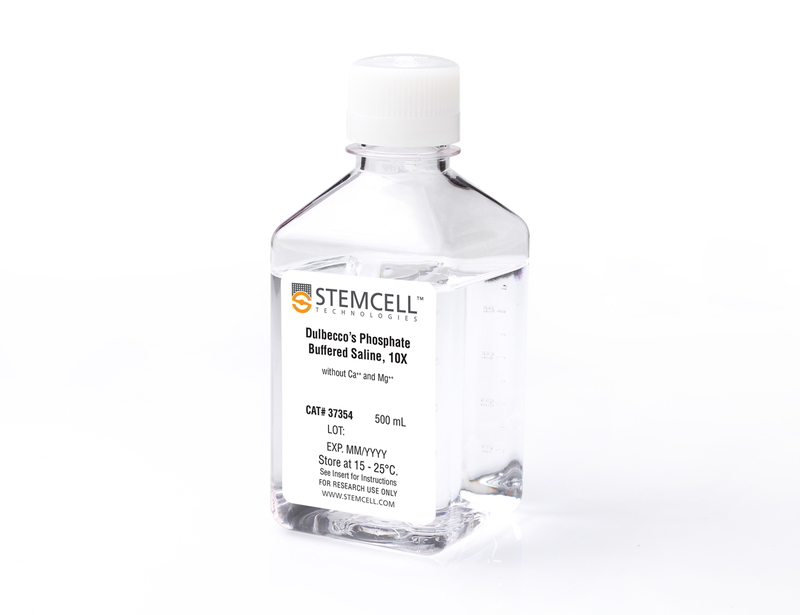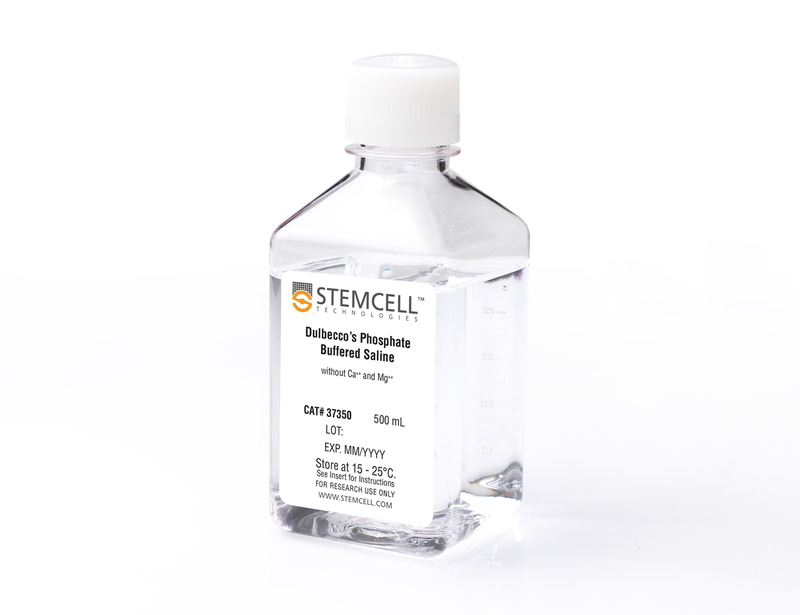D-PBS (Without Ca++ and Mg++)
Dulbecco’s phosphate-buffered saline without calcium and magnesium
概要
Dulbecco’s phosphate-buffered saline (D-PBS) can be used as a temporary diluting, washing, irrigating, or transporting solution for cell or tissue culture. It provides a buffering system to maintain the physiological pH range and osmotic balance of culture media, and provides cells with a source of water and essential inorganic ions.
Species
Human, Mouse, Rat, Non-Human Primate, Other
技术资料
| Document Type | 产品名称 | Catalog # | Lot # | 语言 |
|---|---|---|---|---|
| Product Information Sheet | D-PBS (Without Ca++ and Mg++) | 37350 | All | English |
| Product Information Sheet | D-PBS, 10X Concentrate (Without Ca++ and Mg++) | 37354 | All | English |
| Safety Data Sheet | D-PBS (Without Ca++ and Mg++) | 37350 | All | English |
| Safety Data Sheet | D-PBS, 10X Concentrate (Without Ca++ and Mg++) | 37354 | All | English |
数据及文献
Publications (1)
Biomaterials 2016 JAN
In situ label-free quantification of human pluripotent stem cells with electrochemical potential
Abstract
Abstract
Conventional methods for quantification of undifferentiated pluripotent stem cells such as fluorescence-activated cell sorting and real-time PCR analysis have technical limitations in terms of their sensitivity and recyclability. Herein, we designed a real-time in situ label-free monitoring system on the basis of a specific electrochemical signature of human pluripotent stem cells in vitro. The intensity of the signal of hPSCs highly corresponded to the cell number and remained consistent in a mixed population with differentiated cells. The electrical charge used for monitoring did not markedly affect the proliferation rate or molecular characteristics of differentiated human aortic smooth muscle cells. After YM155 treatment to ablate undifferentiated hPSCs, their specific signal was significantly reduced. This suggests that detection of the specific electrochemical signature of hPSCs would be a valid approach to monitor potential contamination of undifferentiated hPSCs, which can assess the risk of teratoma formation efficiently and economically.




